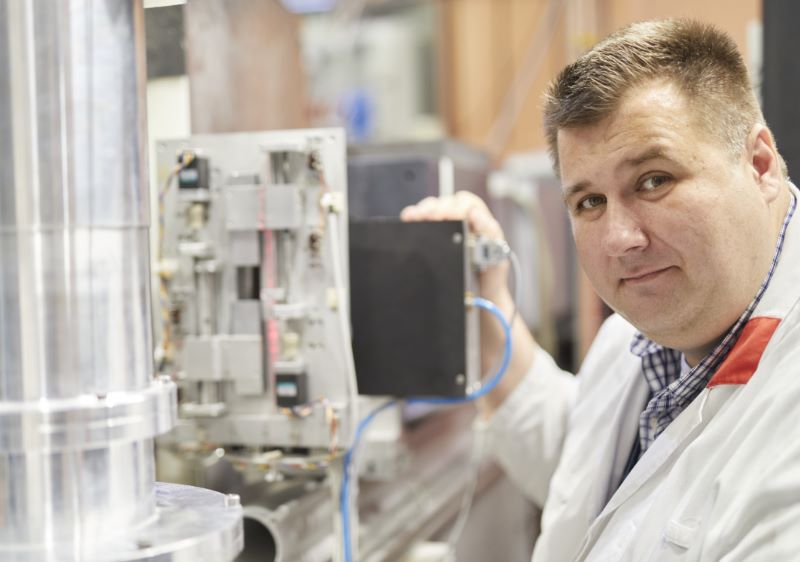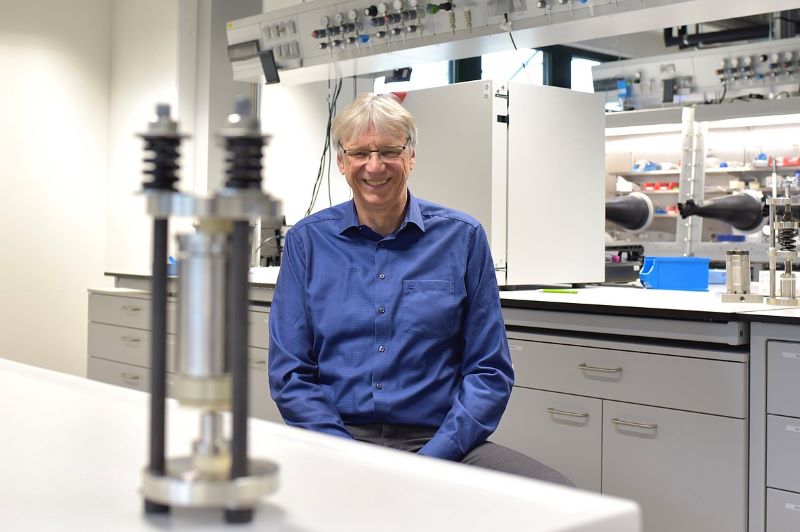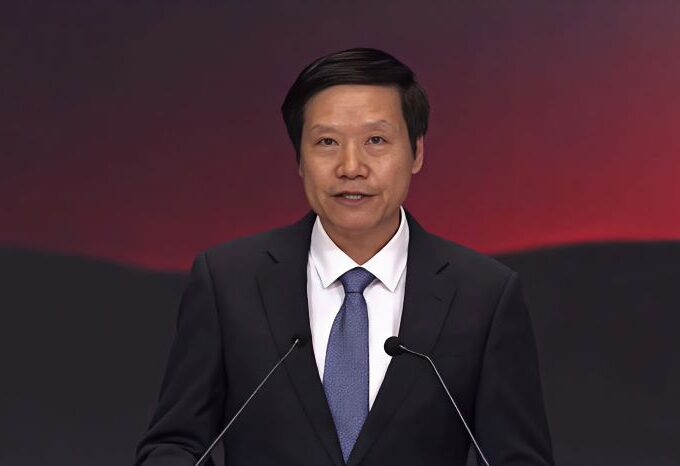In today’s rapidly advancing technological landscape, innovations in energy storage technology remain the core driving force behind the progress of various industries. From everyday devices like smartphones and laptops to transformative modes of transportation like electric vehicles, and even supporting large-scale renewable energy applications with energy storage systems, every major breakthrough in battery technology is like an injection of vitality into human societal development. Recently, exciting news has emerged in the field of solid-state battery technology, as scientists from institutions like the Technical University of Munich in Germany have achieved a milestone result, bringing solid-state batteries a step closer to commercialization.
Major Breakthrough in Solid-State Battery Technology
On May 15, 2025, related research findings were published in Advanced Energy Materials, revealing that the research team successfully developed a new composite material made of lithium, antimony, and scandium. The most remarkable feature of this material is its lithium-ion conductivity rate, which is more than 30% higher than existing materials, setting a new record. While this improvement might seem like just a percentage change, it signifies a giant leap in battery performance, akin to moving from a “narrow alley” to a “high-speed highway,” providing key material support for the leap in solid-state battery performance.
The research team cleverly designed the material by partially replacing lithium atoms in lithium antimony with scandium in order to precisely create special gaps, or lattice vacancies, in the crystal structure. These microscopic lattice vacancies act like a carefully constructed “highway network,” creating smooth and efficient pathways for lithium ions. After validation by other research teams, the new material’s lithium-ion conductivity far exceeds that of existing materials. Previously, lithium-sulfur materials, which held the record, required the addition of five other elements to achieve high performance. This new material, however, only needs scandium to achieve the same results, greatly simplifying the material preparation process. Furthermore, this material not only demonstrates excellent ion conduction ability, but also has superb electron conductivity, making it an ideal candidate for electrode additives.
The Dilemmas of Traditional Batteries and the Advantages of Solid-State Batteries
Traditional lithium-ion batteries rely on the movement of lithium ions between the anode and cathode through an electrolyte to transfer charge. The electrolyte plays a crucial “bridge” role in this process. However, the liquid electrolytes commonly used today have many drawbacks, such as leakage. When leakage occurs, it not only affects battery performance but also risks damaging the surrounding environment and equipment. Additionally, liquid electrolytes are flammable and pose a risk of fire or explosion, which is a significant safety hazard in applications like electric vehicles. Moreover, as the number of charge-discharge cycles increases, liquid electrolytes degrade, leading to battery capacity reduction and shorter service life.
Solid-state batteries take a different approach by replacing the liquid electrolyte with solid materials, resulting in several advantages. First, solid-state electrolytes are more stable and can withstand higher energy densities, meaning the battery can store more energy without significantly increasing its size or weight. This is crucial for improving the driving range of electric vehicles and extending the usage time of electronic devices. Second, solid-state electrolytes significantly reduce the risk of battery fire or explosion, greatly improving safety. Additionally, solid-state batteries maintain more stable performance during charge-discharge cycles, reducing capacity degradation and extending battery life. However, during the development process, solid-state batteries face several challenges, with the rate of lithium-ion conduction in solid electrolytes being a key difficulty. The recent breakthrough by the German team addresses this core issue.

Outstanding Properties of the New Composite Material
- Excellent Thermal Stability
In addition to its outstanding ion conductivity, this new composite material also has other remarkable advantages. In terms of thermal stability, it performs exceptionally well, maintaining structural stability and normal performance at higher temperatures. This is essential for batteries used in various environmental conditions. For example, traditional batteries might suffer performance degradation or even safety issues due to high temperatures in hot summers, whereas solid-state batteries using this new material could avoid such issues. - Preparation Process Facilitates Commercialization
From the perspective of the preparation process, the material can be manufactured at scale using mature processes, laying a solid foundation for large-scale commercialization in the future. The material has already entered the patent application stage, signaling an important step towards commercialization. - Broad Applicability of the Principle
It is worth noting that while the material is based on the lithium-antimony system, its underlying principles are also applicable to other systems, such as lithium-phosphorus. This means that the research findings have broad applicability and scalability, potentially sparking a wave of related material development and advancing the entire solid-state battery field.
Broad Application Prospects of Solid-State Batteries
In terms of the application prospects of solid-state batteries, this breakthrough is undoubtedly a timely development. In the electric vehicle sector, one of the key factors limiting further adoption is driving range and charging time. With the new composite material, solid-state batteries, due to their higher energy density and faster ion conduction rates, are expected to significantly improve the driving range of electric vehicles, allowing them to meet the long-distance travel needs of users just like traditional gasoline-powered vehicles. Additionally, faster ion conduction rates mean potentially faster charging times, alleviating users’ “range anxiety” and “charging anxiety.”
In the consumer electronics sector, users of devices like smartphones and laptops have long desired batteries that provide longer usage times and shorter charging durations. The application of solid-state batteries would allow these devices to run longer on a single charge, providing great convenience for users.
Furthermore, in the field of renewable energy storage, solid-state batteries also hold vast application potential. Solar, wind, and other renewable energy sources produce intermittent and unstable power, requiring efficient storage devices to store excess energy and release it when needed. The high energy density and long lifespan of solid-state batteries make them more suitable for renewable energy storage, promoting the large-scale application and development of renewable energy.
Challenges to Commercialization and Responses
Of course, transitioning from laboratory research results to large-scale commercialization of solid-state batteries still faces several challenges. On one hand, the current manufacturing cost of solid-state batteries is relatively high, mainly due to the material costs and complex manufacturing processes. To achieve large-scale commercialization, it is necessary to further reduce costs and improve production efficiency.
On the other hand, while this material breakthrough significantly improves ion conduction rates, other issues, such as the compatibility and stability of the material with other battery components, must also be considered to ensure the long-term stable operation of the entire battery system. However, many companies and research institutions are confident about the future of solid-state batteries and are investing heavily to overcome these challenges. Industry giants like CATL and Toyota have already made significant investments in solid-state battery research. With ongoing technological advancements and the gradual improvement of the industrial supply chain, solid-state batteries are expected to gradually achieve commercialization in the coming years and occupy an increasingly important position in the market.
The recent breakthrough by the Technical University of Munich and other institutions in the field of solid-state battery materials undoubtedly injects new vitality into the global development of energy storage technologies. Not only does it provide crucial support for the improvement of solid-state battery performance, but it also lights the way for the commercialization process. Against the backdrop of global advocacy for sustainable development and the increasing demand for clean energy, solid-state batteries are poised to become the “new darling” of the energy storage field, driving leapfrog development across multiple industries like electric vehicles, consumer electronics, and renewable energy, ultimately transforming our way of life and energy use, and ushering in a new era of energy storage.












